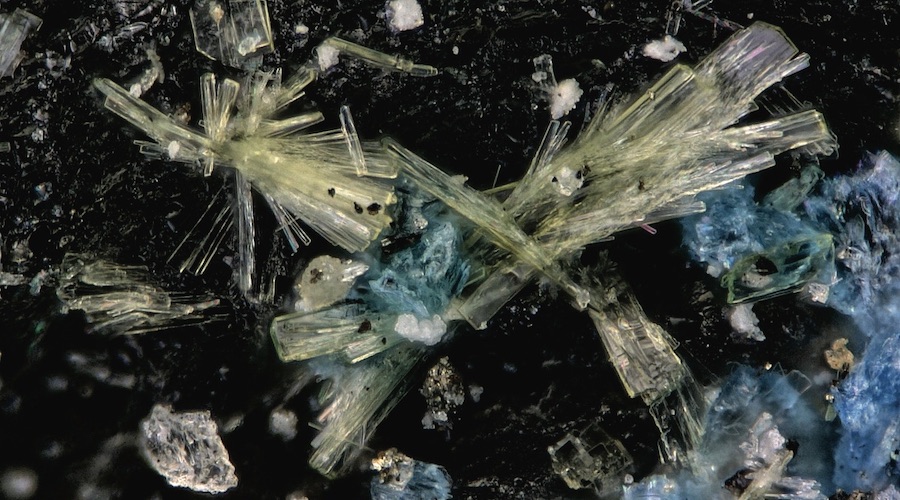
The mineral occurs as tiny yellow, rectangular blades measuring up to 0.3 millimetres in length. The crystals are thin and brittle and dissolve in water. Its chemical formula is K2Fe2+[(UO2)(SO4)2]2(H2O)8 and it was initially discovered at Utah’s North Mesa mines near Temple Mountain.
Oldsite was named after Dr. Travis Olds, the Carnegie Museum of Natural History’s assistant curator of minerals.
Olds has discovered or been involved in the description of 24 new minerals, of which 21 contain uranium. His research focuses on the structure-property relationships of minerals and materials, employing spectroscopic, diffraction and particle scattering techniques to study them at the atomic scale.
“I’m honoured to be the namesake of such a fascinating mineral,” Olds said in a media statement. “My research focuses on descriptive mineralogy, particularly minerals containing uranium, which has been my passion since I knew I wanted to become a mineralogist. Oldsite is unique because it helps us fill in some puzzle pieces about how uranium behaves in the environment. The way its atoms connect to each other in the crystal structure tells us about the conditions that led to its formation. This information can be useful to help keep uranium out of drinking water, or to clean up nuclear waste.”




